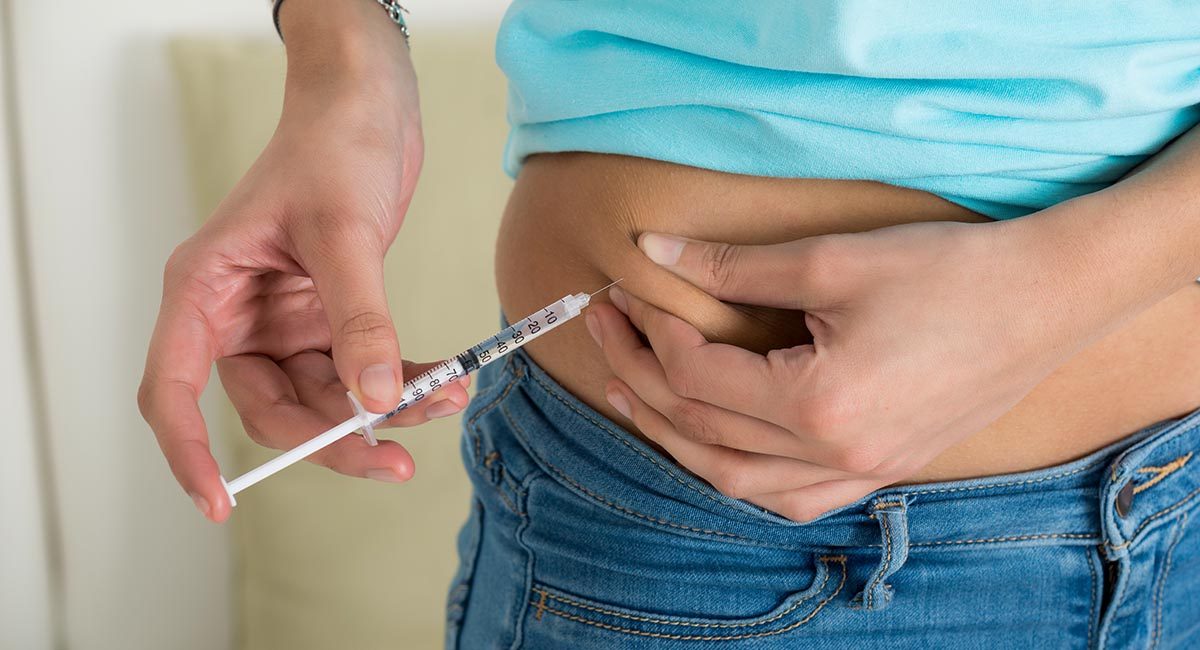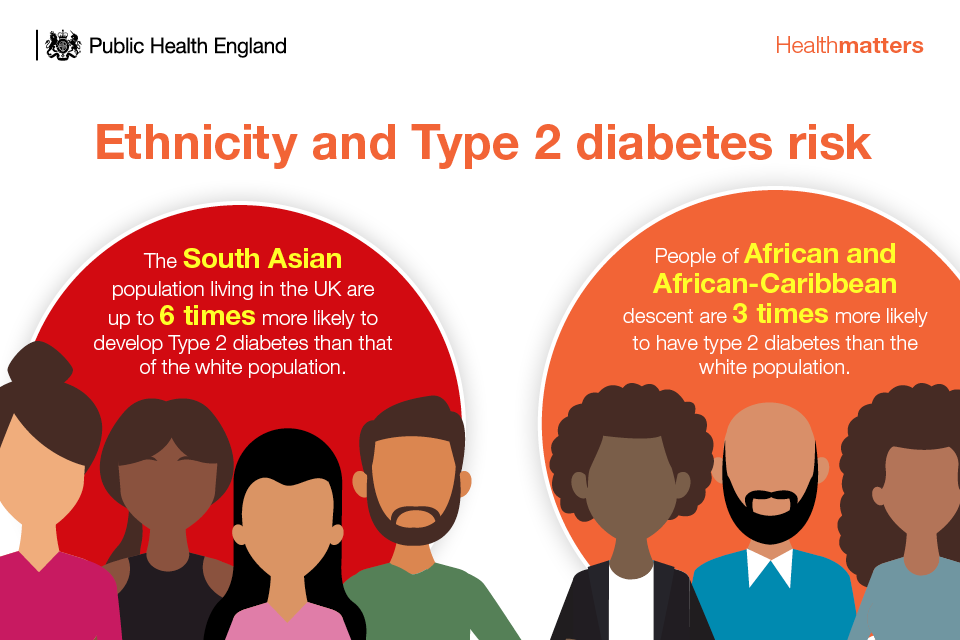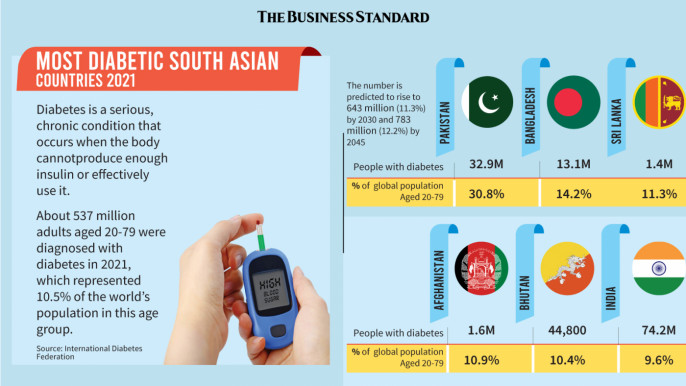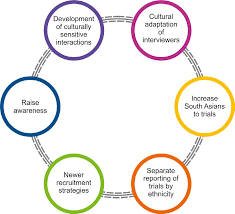Why are South Asians at risk of diabetes?
Nuha Shukry • 2024-06-28
It is no secret to any young South Asian person that diabetes is a likely feature of their future. This is as daunting as it is true.
Introduction:
Recent data from 2021 shows that India has 101 million diabetics and a further 136 million who suffer from prediabetes. Countries with large proportions of Asian immigrants, such as the UK and Singapore, have proven the prevalence of diabetes in South Asian communities, as these subgroups reportedly have an increased likelihood of developing the dangerous illness as compared to native groups. South Asian immigrant populations abroad are also amongst the youngest in the country to jump on the diabetes bandwagon, founded in genetic dispositional factors, healthcare disparities and cultural attitudes. This article further explores the connection, attempting to look at some of the scientific and sociological reasonings behind the fatal epidemic and the steady rise of diabetes.
Low levels of insulin secretion:
A prominent study comparing non-diabetic South Asians to other minority ethnic groups and Caucasians found that South Asians had the lowest levels of insulin secretion. Insulin is vital in transporting excess glucose into cells to be used for energy or storage. A lack of this can lead to insufficient processing of glucose and blood sugar levels can dramatically increase. This may be a result of genetic mutations causing poor beta cell functioning. Other genetic mutations, such as GRB14, impact insulin sensitivity, resulting in further insulin resistance. As diabetes is wholly rooted in insulin perceptiveness, it is clear that such genetic mutations can put South Asians at real risk of catching this tragic illness.
Diet:
Massive family dinners and cultural spreads of sweets are no stranger to religious and cultural celebratory occasions. Food is used within the South Asian community to honour and celebrate important events. Many of these dishes include rice, bread, potatoes, meat, clarified butter, oil and sugar. Though these make for a rich culture and an integral aspect of cultural identity, it is also important to admit that this diet is not sustainable and can cause long-term harm to the physical well-being of a person. South Asian food is rich in carbohydrates, fats, and lipids that reduce insulin efficacy and cause decreased processing of nutrients in food to convert them into energy
As opposed to waving the problem away with a leaflet about the dangers of a fatty diet, an emphasis on actually adaptable techniques and alternatives is more long-lasting and applicable to the rich cultural lifestyle of a typical South Asian family. For instance, Ram et. al. found that adult children in the 2010 MASALA (Mediators for Atherosclerosis in South Asian Living in America) study were very influential in increasing the dietary quality of parents and promoting physical activity.
Perhaps if research were to take advantage of dense and strong social networks among immigrant communities, this could be used to encourage well-being and control over physical health, especially the prevention of diabetes. The strong community ties that this subgroup can boast should be leveraged in order to advance a healthier lifestyle.
Fasting
Islam, Jainism and Hinduism are some of the most prominent religions in South Asia and their fasting practices are both beneficial and dangerous when misunderstood. For instance, the day-long Hindu fasts may be harmful to some individuals at risk or already suffering from diabetes. For diabetic Jains, low-risk fasts can be implemented with proper dose adjustments. For Muslims, fasting from dawn to sunset is similar to the popular use of intermittent fasting, which is occasionally prescribed for prediabetics. However, paradoxically, excessive feasting after breaking the fast can lead to hyperglycemia and weight gain.
Effective education programmes for healthcare professionals as well as patients can ensure that clinical benefits are derived from valuable religious practices such as fasting (and feasting!) Individualised training in NHS services that are located in boroughs with a high number of people of South Asian descent can ensure that doctors can address any health risks surrounding fasting, and patients will feel comfortable sharing their fasting schedule so that both parties can work together and create a beneficial health plan that decreases the likelihood of diabetes.
Physical activity:
Not only do members of the Indian sub-continent require more exercise (232 minutes for South Asian adults as compared to 150 minutes recommended to White Europeans), but they also need to combat the cultural contradictions that physical exercise demands. An example of the extent to which physical activity is downplayed in the community is that many South Asian women do not engage in the recommended amount of exercise, as found in 26 quantitative studies. When we explore some of the barriers to physical activity, it is clear that many cultural factors must be taken into consideration when diagnosing diabetes and issuing exercise as an answer to poor health.
South Asian families are occupied with family and carer commitments, long working hours, fear for safety, a lack of same-sex exercise spaces, concerns for racism and harassment, as well as a disdain for immodest attire such as skin-tight spandex and revealing clothing that is adopted by western women. There are some changes in attitude; however, it is equally important to note that alterations in cultural and faith values cannot be expected but should be accommodated for a healthier, more active, and inclusive future.
Disparities in research:
Despite efforts to increase inclusion in clinical trials, there is still a gap in research studies, particularly around health risks specific to the community, such as diabetes. Some possible reasons for this are that the brown community is especially sceptical of the ethical guidelines of such studies, and there are fears of stigma around certain research topics
This is particularly true when research is done into sensitive areas of health that explore and/or criticise cultural practices. A strong sense of community and family values may also result in restricted access to useful outcomes, as the wider community's influences and conspiracies may steer prospective participants away. Language barriers due to close familial connections can also be a factor in exclusion.
There must be unique training for the community's needs by using cultural and faithsensitive methodology and wider education programmes to encourage a more autonomous outlook on their physical and mental well-being instead of an apocalyptic one. Considering the prevalence of ethnicity-centered illness, it is of utmost importance that more money and time be invested in this area of research.
To conclude, the issue of diabetes in the Indian subcontinent, and those of its descent, is not unavoidable. With proper education and understanding of their needs, healthcare services can be adapted and improved in a manner that respects each person’s background and circumstances. Investing in improving the health of the South Asian community, is a move to enhance the physical and mental state of 2.2 million members of the United Kingdom. 2.21 million individuals under the National Health Service, an institution founded for the people, that should reflect the needs of ALL the people.
Reference: https://www.ncbi.nlm.nih.gov/pmc/articles/PMC7531132/ https://onlinelibrary.wiley.com/doi/10.1111/dme.14497 https://diabetesjournals.org/care/article/47/1/7/154008/Diabetes-in-South-AsiansUncovering-Novel-Risk https://www.metabolismjournal.com/article/S0026-0495(13)00340-5/abstract https://www.nature.com/articles/ng.921https://www.youtube.com/watch?v=amu5m9M8aGM Why South Asians are at increased risk for diabetes: A complex interplay of genetics, diet and history (theconversation.com) South Asians in the United Kingdom - Wikipedia
See More Posts
Copyright © 2021 Govest, Inc. All rights reserved.





